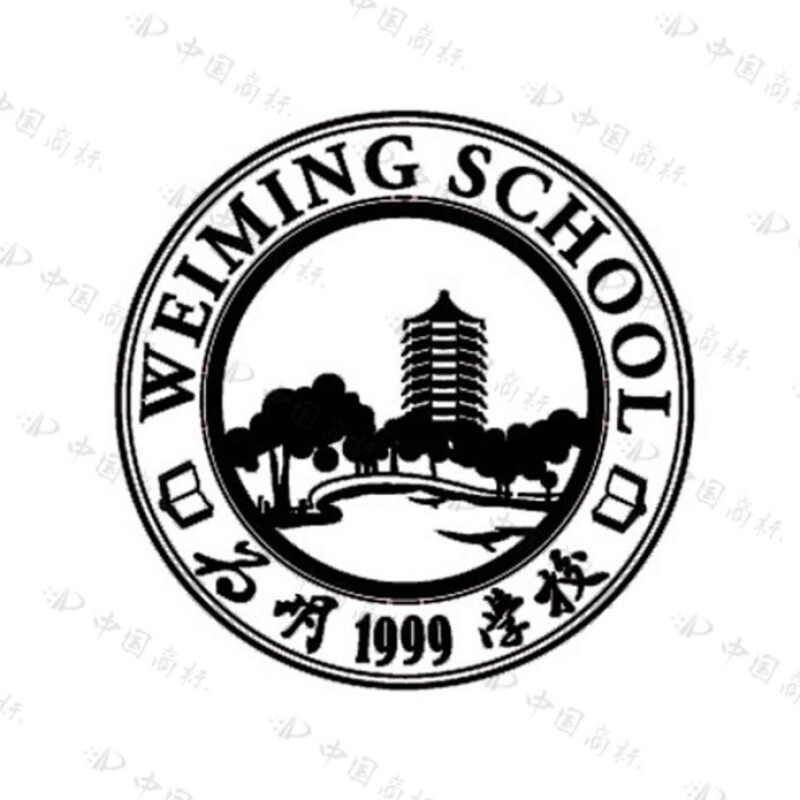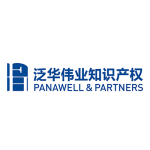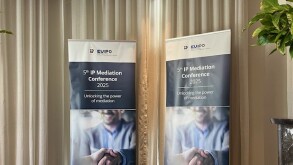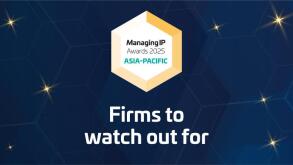Article 10 of the Trademark Law of the PRC (Trademark Law) provides for the “absolute grounds” prohibited for trademark registration and use. Among these, Article 1 (7) stipulates that signs that are deceptive and likely to mislead the public about the quality and other characteristics of goods and services, or the place of origin, shall not be used as trademarks. Based on this, the Trademark Examination and Hearing Guidelines (Trademark Guidelines) requires that when examining an applied-for trademark, examiners shall verify whether a sign containing an enterprise’s name is substantially different from the applicant's name.
However, in certain cases, examiners of CNIPA and the judges of the relevant courts have different opinions in finding and judging. They even occasionally make vastly different or diametrically opposite decisions in the same circumstances, meaning trademark applicants will struggle to anticipate their applications and results.
On March 27, 2020, the CNIPA refused a trademark application filed by a British applicant, The Pocklington School Foundation, in class 41. The application was in respect of education-related services, for its logo of Pocklington School (see Figure 1 below) operated and managed by itself. The text includes the Latin "VIRTUTE ET VERITATE", translated as "virtue and truth", the school motto. In English, there is "FOUNDED 1514" and "YORKSHIRE", which is when and where the school was established, and "POCKLINGTON SCHOOL", which is the name of the school.
The CNIPA cited the above provision of the Trademark Law, and held that “the sign is substantially different from the name of the applicant, and the use as a trademark for the services designated is likely to mislead consumers or relevant public, so it shall not be used as a trademark.” The applicant was frustrated, and so requested a re-examination by the CNIPA and filed administrative lawsuits with the Beijing Intellectual Property Court (BJIPC) and Beijing Higher People’s Court (BJHPC). The applicant provided evidence including the official approval documents establishing the school, the facts of the school’s existence of more than 500 years, and many online uses of the trademark in the UK also accessible to the relevant Chinese public, but the refusal was upheld.

Figure 1
Surprisingly, another applicant from the UK, Headington School Oxford Limited, filed a trademark application for the name “海丁顿学校 HEADINGTON SCHOOL” (See Figure 2 below) of the school established and operated by the applicant. The CNIPA held that “‘海丁顿学校’, ‘HEADINGTON SCHOOL’ are the trademarks and trade names that have been used by the applicant for a long time. Headington School is established and managed by the applicant, so the use of the applied-for trademark will not mislead consumers and therefore the CNIPA preliminarily approved the application to be registered.

Figure 2
Comparing what the CNIPA concluded in the two cases above, in the Headington School Case the examiners were persuaded to believe that ‘海丁顿学校’ and ‘HEADINGTON SCHOOL’ are trademarks and trade names used for years already by Headington School Oxford Limited. Contrarily, this circumstance was not mentioned at all in the re-examination decision of the Pocklington School Case. We believe that the applicant in the Headington School Case also provided strong evidence of the long-term use of the applied-for trademark to prove that the inconsistency of the names does not bring about misunderstanding to consumers. This would have convinced the examiner to conclude that the name of the school included in the applied-for trademark is not different in substance from that of the applicant.
Confusingly, when the CNIPA invoked the above provision in the re-examination of the Pocklington School Case, it said that the applied-for trademark is materially different from the applicant’s name. Further, it said the use of the trademark on the services outlined would easily lead to a misunderstanding of the source and other characteristics of the services by consumers. However, in litigation, the Trial Court maintained "the trademark is materially different from the name of the plaintiff (applicant)” but said “the use of the trademark at issue in class 41 will easily lead to misidentification of the purpose, content, object and other characteristics of the services by the relevant public”.
Further, the Court of Appeal, in its final judgment, merged the conclusions of the re-examination and the Trial Court. On the one hand, it held that there was a substantial difference between “Pocklington School” and “Pocklington School Foundation”, so the use of the trademark on the selected services would easily lead to misunderstanding of the source and other characteristics of the services. On the other hand, it unexpectedly added that “according to the regulations of the Ministry of Education and the Administration for Industry and Commerce, before the use of the words/characters like ‘school’ and ‘kindergarten’ in the name of a private school, it is necessary to obtain the corresponding administrative approval and license. Therefore, the registration and use of the trademark will lead to misunderstanding of the relevant public about the qualification, content and quality of the designated services, in the absence of evidence to prove that Pocklington School Foundation has obtained the corresponding administrative license”.
From the above, it is obvious that when considering whether the school name included in the sign is materially different from the applicant’s name, there are at least different opinions among the examiners and judges as listed below:
1. Determining that there is a substantial difference immediately when the school name contained in the sign is not exactly the same as the applicant’s name, and further determining that it may easily cause consumers to misunderstand the source of service;
2. Determining that the applicant’s name is not substantially different from the school name in the applied-for trademark, if the applicant can provide strong evidence of the long-term use of the trademark in re-examination to prove that the inconsistency of the names does not bring about misunderstanding by consumers;
3. Determining that misunderstanding about the qualification, content and quality of the designated services arises and the applied-for trademark is thus refused if there is a word like “school” in the trademark, and the applicant could not provide evidence that it has obtained relevant administrative approval or license issued by the Chinese government.
In other words, the applicant in the Headington School Case, as a foreign operator applying in China for trademark registration for its school logo, will likely have its trademark refused, if it comes across an examiner having the third opinion above.
In fact, Chinese applicants have encountered the same problems. Beijing Weiming Shuren Educational Consulting Co., Ltd. once applied for registration of trademarks for “为明学校 1999WEIMINGSCHOOL” and its logo (See Figure 3 below), in class 41 for several Weiming Schools established by its affiliated company. But the application was refused by the CNIPA on the same grounds in accordance with the above provision of the Trademark Law.

Figure 3
The applicant submitted substantial evidence to the Trial Court to prove that most schools containing “为明” are its affiliates, and Qingdao Weiming School and Guangzhou Weiming School authorised the applicant to apply for registration of the trademark. This was hopefully to prove that there was no material difference between the trademark and the applicant’s name. The applicant luckily won in front of the Trial Court. However, the appellate court, by invoking the above provision of the Trademark Law, eventually upheld the refusal made by the CNIPA for the reason that “it is still hard to prove that the registration of the trademark applied by the applicant is consistent with the common business practices and is likely to mislead the public about the source of service in the event that ‘Weiming School’ contained in the trademark is different from the applicant’s name”.
It is noteworthy that the applicant petitioned to the Supreme People’s Court for a retrial. In the ruling, although the issue of "substantial difference" in the names was not directly addressed, the Supreme People’s Court ruled that “if the meaning of the trademark differs from that of its services designated, it is easy for the relative public to misunderstand the characteristics and quality of the services”. It further concluded that "although it is improper for the Trial Court to judge only from the perspective of the difference between the trademark at issue and the applicant’s name, it is not unjustified to conclude that it violates Article 10(1)(7) of the Trademark Law.” The Supreme People’s Court rejected the finding of the Court of Appeal regarding the substantial difference in the names.
Adding to the confusion, Article 1 of the Notice of the State Administration for Industry and Commerce (SAIC) and the Ministry of Education (MOE) on the Registration and Management of the Names of For-Profit Private Schools (Industry and Commerce Enterprise Note No. [2017] 156) just states that private schools should be registered as limited liability companies or joint stock companies. This should be done in accordance with the relevant provisions of the corporate law of the PRC and the Promotion of Private Education Law of the country, and their names shall comply with the laws and regulations of company registration management and education. Obviously, the aforementioned first opinion directly conflicts with this provision.
From the above cases, when applying Article 10(1)(7) of the Trademark Law to examine whether a logo containing a school name is materially different from the name of the applicant, there is a lack of uniformity between the administrative and judicial authorities. This stretches to between courts at different levels, and even the interpretation and application of the law apparently conflicts with the existing regulations. This results in “different judgments in the like cases”, causing severe confusion and failing to reflect the equality before the law.
An important principle in the rule of law is to prevent and avoid arbitrariness or capriciousness in administrative and judicial decisions or judgments, and to implement “the like judgment in the like case”. It is from the requirement of equality in the law in Article 33(2) of the Constitution, including the requirement that administrative and judicial authorities shall equally protect the legitimate rights and interests of citizens, and give the same legal treatment to similar cases. It is not only the embodiment of formal justice, the establishment of the credibility of the law, and the need to maintain social order, but also of vital significance in regulating discretionary power. Otherwise, it will inevitably lead to people’s inability to reasonably expect the legal consequences of their own or other people's actions, causing chaos in the social order.
In view of the controversies of the cases discussed above, we attempt to resolve the relevant legal issues and provide some ideas and suggestions for the examination and trial of similar cases in future.
Article 10(1)(7) of the Trademark Law is to “require trademark users to be responsible for the quality of the goods on which a trademark is used. If a trademark is deceptive, it is prone to cause misunderstanding to the public as to the quality or other characteristics of the goods or the place of origin, and misleading to consumers to consume on the basis of the misconceptions, thereby damaging their interests”. We believe that the phrase “deceptive and likely to cause the public to misunderstand the origin or other characteristics of the goods” means that a trademark may cause the public to believe that the services provided by the use of the trademark is not related to the applicant. Thus, this would cause the public or consumers to presume that the subject shown in the trademark or other subjects affiliated with the subject provide the services and take responsibility.
Thus the Trademark Guidelines require that in trademark examination, it is necessary to examine whether the company name contained in the sign is substantially different from the name of the applicant. Therefore, the examination of whether the name contained in the mark is substantially different from the name of the applicant should not be mechanically compared word by word, but should be based on whether the applicant is materially associated with the subject shown in the trademark. Especially in the context of today’s increasingly complex and diverse governance structures and the benefits of technologies, the public is familiar with and accepts the business model of division of labour and cooperation, and the sharing of brand resources between affiliated enterprises and institutions.
As long as there is such an association, it should be determined that there is no substantial difference between the two, and will not cause the public to misunderstand the source of the goods/services and other characteristic. The understanding of the public or consumers that the service provided by the trademark comes from the subject indicated by the trademark will not fundamentally mislead them about the source of the goods or services, and their interests will not be damaged as a result.
Even if the above regulation of the MOE and the former SAIC requires administrative approval for establishing private schools and using the words such as “school” and “kindergarten” in the names of private schools in China, it is only the condition for establishing private schools in China. This is instead of the application for trademark registration under the Trademark Law. In other words, China’s Trademark Law never requires that an applicant must first establish a private school in China, and then obtain administrative approval and license to include the word “school” in the name before applying for a trademark.
If concluding that a trademark in respect of such services constitutes the relevant provision of the Trademark Law: “since no evidence has been submitted to prove that the corresponding administrative license has been obtained, the registration and use of the trademark will lead to the misunderstanding of the relevant public about the qualification, content and quality of the services”, it is tantamount to creating an administrative license in addition to the Trademark Law. This obviously violates the Trademark Law and the relevant provisions of the Administrative License Law, and the consequences will be serious.
The requirement to provide evidence of obtaining such a license is similar to the one in the previous Rules for the Implementation of the Trademark Law, in that the applicant for trademark registration for a pharmaceutical product must provide a certificate issued by the administrative department of health. However, such needs of industry-specific management should not be regulated through the interpretation of the provisions of the Trademark Law but should be governed by the corresponding special law.
On the other hand, even if the relevant factors need to be considered, it should comply with Article 17 of the Trademark Law on the principle of reciprocity to determine foreign-related cases. This is provided that the foreign school subject has been approved by the government of its home country and bona fide exists. It is not only unnecessary but also unfair to require such applicants to obtain the corresponding administrative approval and license in China at the stage of applying for trademark registration.
Furthermore, there was a good example of a solution for this as early as 1994. Under Article 3 of the Notice of the Trademark Office of the SAIC on the Relevant Issues in the Acceptance of Trademark Registration Applications published on October 13, 1994: “According to Article 11 of the Rules for the Implementation of the Trademark Law and Article 27of the Drug Administration Law, foreigners or foreign enterprises shall provide the certificate of drug production issued by their home countries (regions) when applying for trademark registration for pharmaceutical products.”












